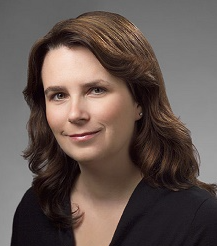 Predictions for 2017 are everywhere this time of year, and it is no wonder. There are so many technological advances, in health care and elsewhere, and a seemingly endless appetite for them. We all want the latest and greatest gadgets, we all want the most modern treatments, we all have come to increasingly rely on technology, and we all -- mostly -- see an even brighter technological future ahead. Here's my meta-prediction: some of the predicted advances won't pan out, some will delight us -- and all will end up surprising us, for better or for worse. Like Father Time and entropy, the law of unintended consequences is ultimately undefeated...
Predictions for 2017 are everywhere this time of year, and it is no wonder. There are so many technological advances, in health care and elsewhere, and a seemingly endless appetite for them. We all want the latest and greatest gadgets, we all want the most modern treatments, we all have come to increasingly rely on technology, and we all -- mostly -- see an even brighter technological future ahead. Here's my meta-prediction: some of the predicted advances won't pan out, some will delight us -- and all will end up surprising us, for better or for worse. Like Father Time and entropy, the law of unintended consequences is ultimately undefeated...
Latest News
Open Medical Records Community Supports New System In Mozambique
 The southern African country of Mozambique suffers under the most extreme challenges for resource-poor countries: economic instability, political strife, civil unrest, corruption and crime, unreliable infrastructure (such as transportation and telecommunications), and a large-scale HIV epidemic that has yet to be declared under control...The nation has enormous need and opportunity for improving its healthcare system and the lives of its residents. In the face of their crisis, Mozambique is working to equip its medical clinics across the nation with an electronic medical records system (EMR). Mozambique believes an EMR can empower clinicians to give high-quality and consistent care to those most in need, while allowing the country to reap the insights of comprehensive reporting for responsive public health decision making...
The southern African country of Mozambique suffers under the most extreme challenges for resource-poor countries: economic instability, political strife, civil unrest, corruption and crime, unreliable infrastructure (such as transportation and telecommunications), and a large-scale HIV epidemic that has yet to be declared under control...The nation has enormous need and opportunity for improving its healthcare system and the lives of its residents. In the face of their crisis, Mozambique is working to equip its medical clinics across the nation with an electronic medical records system (EMR). Mozambique believes an EMR can empower clinicians to give high-quality and consistent care to those most in need, while allowing the country to reap the insights of comprehensive reporting for responsive public health decision making...
- Login to post comments
Open Source and the Software Supply Chain
 Grasping the nuances of hardware supply chains and their management is straightforward—you essentially are tracking moving boxes. Managing something as esoteric as resources for building software with a variety of contributions made by the open source community is more amorphic. When thinking about open source platforms and supply chains, I thought of the supply chain as a single process, taking existing open source components and producing a single result, namely a product. Since then, I’ve begun to realize that supply chain management defines much of the open source ecosystems today. That is, those who know how to manage and influence the supply chain have a competitive advantage over those who don’t do it as well, or even grasp what it is...
Grasping the nuances of hardware supply chains and their management is straightforward—you essentially are tracking moving boxes. Managing something as esoteric as resources for building software with a variety of contributions made by the open source community is more amorphic. When thinking about open source platforms and supply chains, I thought of the supply chain as a single process, taking existing open source components and producing a single result, namely a product. Since then, I’ve begun to realize that supply chain management defines much of the open source ecosystems today. That is, those who know how to manage and influence the supply chain have a competitive advantage over those who don’t do it as well, or even grasp what it is...
- Login to post comments
7 Notable Legal Developments in Open Source in 2016
 In 2012 the jury in the first Oracle v. Google trial found that Google's inclusion of Java core library APIs in Android infringed Oracle's copyright. The district court overturned the verdict, holding that the APIs as such were not copyrightable (either as individual method declarations or their "structure, sequence and organization" [SSO]). The Court of Appeals for the Federal Circuit, applying 9th Circuit law, reversed, holding that the "declaring code and the [SSO] of the 37 Java API packages are entitled to copyright protection." The U.S. Supreme Court declined to review the case, and in 2016 a closely watched second trial was held on Google's defense of fair use. In May 2016 the jury returned a unanimous verdict in favor of Google...
In 2012 the jury in the first Oracle v. Google trial found that Google's inclusion of Java core library APIs in Android infringed Oracle's copyright. The district court overturned the verdict, holding that the APIs as such were not copyrightable (either as individual method declarations or their "structure, sequence and organization" [SSO]). The Court of Appeals for the Federal Circuit, applying 9th Circuit law, reversed, holding that the "declaring code and the [SSO] of the 37 Java API packages are entitled to copyright protection." The U.S. Supreme Court declined to review the case, and in 2016 a closely watched second trial was held on Google's defense of fair use. In May 2016 the jury returned a unanimous verdict in favor of Google...
- Login to post comments
2017 Prediction: Some "Oops" Ahead
- Login to post comments
Halamka Sets Healthcare Innovation Priorities for 2017
 As we begin 2017, what should be the focus of our work over the next year?... Regardless of the policies, repeals, and delays of the Trump administration, we’ll still need to optimize usability and support the four goals of value-based purchasing - quality measurement, total medical expense management, practice process improvement and technology adoption. BIDMC has already created a prototype of groupware documentation and we should complete our next generation inpatient documentation solution by mid 2017. Part of that work incorporates open source secure texting as part of the medical record. We’re also piloting Google’s G-suite so that our stakeholders can store/share, collaborate, and communicate on any device from anywhere using only a browser...
As we begin 2017, what should be the focus of our work over the next year?... Regardless of the policies, repeals, and delays of the Trump administration, we’ll still need to optimize usability and support the four goals of value-based purchasing - quality measurement, total medical expense management, practice process improvement and technology adoption. BIDMC has already created a prototype of groupware documentation and we should complete our next generation inpatient documentation solution by mid 2017. Part of that work incorporates open source secure texting as part of the medical record. We’re also piloting Google’s G-suite so that our stakeholders can store/share, collaborate, and communicate on any device from anywhere using only a browser...
- Login to post comments
Krampus Adopts One Free Software Tool for Each Month in 2017
 Curious how Krampus is doing this year? Well, as the recently hired manager of Krampus's open source programs office, I'm excited to tell you that we have an ambitious plan to adopt one free software tool during each month of the coming year. Our story might be useful for other non-software-focused businesses (Krampus, Inc. doesn't currently produce any software) who are also are curious about open source alternatives and want to follow a similar path. To get you in the spirit, I've included all the links that made us feel like 12 months of free and open source software adoption is possible...
Curious how Krampus is doing this year? Well, as the recently hired manager of Krampus's open source programs office, I'm excited to tell you that we have an ambitious plan to adopt one free software tool during each month of the coming year. Our story might be useful for other non-software-focused businesses (Krampus, Inc. doesn't currently produce any software) who are also are curious about open source alternatives and want to follow a similar path. To get you in the spirit, I've included all the links that made us feel like 12 months of free and open source software adoption is possible...
- Login to post comments
Top 10 Linux News Stories of 2016
 They grow up so quickly. It's hard to believe that 25 years ago Linus Torvalds announced to the comp.os.minix Usenet group that he was "doing a (free) operating system (just a hobby, won't be big and professional like gnu) for 386(486) AT clones." Since 1991, Linux has grown beyond even Torvalds' dreams. It's not a stretch to say that Linux is everywhere. Corporations large and small use Linux, and it powers computers, mobile devices, and connected hardware. Critical infrastructure relies on the stability and flexibility of Linux...
They grow up so quickly. It's hard to believe that 25 years ago Linus Torvalds announced to the comp.os.minix Usenet group that he was "doing a (free) operating system (just a hobby, won't be big and professional like gnu) for 386(486) AT clones." Since 1991, Linux has grown beyond even Torvalds' dreams. It's not a stretch to say that Linux is everywhere. Corporations large and small use Linux, and it powers computers, mobile devices, and connected hardware. Critical infrastructure relies on the stability and flexibility of Linux...
- Login to post comments
On the Need for a Universal Health Record
 The current path of progress of the EHR, with its concentration on “meaningful use,” and an intellectual property regime that does not fully exploit the capacity for innovation by end-users is approaching an evolutionary dead-end. It is time to treat the EHR as what it should be: an integral part of medical care that has limitless potential for maximizing the use of information acquired in the provision of health care, and not an impediment to optimal care and a bugaboo for the physician. Read More »
The current path of progress of the EHR, with its concentration on “meaningful use,” and an intellectual property regime that does not fully exploit the capacity for innovation by end-users is approaching an evolutionary dead-end. It is time to treat the EHR as what it should be: an integral part of medical care that has limitless potential for maximizing the use of information acquired in the provision of health care, and not an impediment to optimal care and a bugaboo for the physician. Read More »
- Login to post comments
Hot Programming Trends from 2016
 Technology is constantly moving forward—well, maybe not always forward, but always moving. Even for someone who keeps an eye on the trends and their effect on programmers, discerning exactly where things are headed can be a challenge. My clearest glimpse into open source programming trends always comes in the fall when I work with my fellow chairs, Kelsey Hightower and Scott Hanselman, and our fantastic programming committee to sculpt the coming year's OSCON (O'Reilly Open Source Convention). The proposals that we get and the number focused on specific topics turn out to be good indicators of hot trends in the open source world. What follows is an overview of the top programming trends we saw in 2016...
Technology is constantly moving forward—well, maybe not always forward, but always moving. Even for someone who keeps an eye on the trends and their effect on programmers, discerning exactly where things are headed can be a challenge. My clearest glimpse into open source programming trends always comes in the fall when I work with my fellow chairs, Kelsey Hightower and Scott Hanselman, and our fantastic programming committee to sculpt the coming year's OSCON (O'Reilly Open Source Convention). The proposals that we get and the number focused on specific topics turn out to be good indicators of hot trends in the open source world. What follows is an overview of the top programming trends we saw in 2016...
- Login to post comments
Kids on Computers Establishes Computer Labs in Five Countries
 Linux and open source software are not just fueling charities, they are gifting the freedom of education and knowledge to the people the charities are helping because of the low cost, yes, but also the exceptional technology. This sentiment is proven when you look at the work the Linux Foundation does supporting a variety of community initiatives and organizations that are using Linux and open source software. While attending LinuxCon NA 2016 in Toronto I learned of Kids on Computers, one such organization...
Linux and open source software are not just fueling charities, they are gifting the freedom of education and knowledge to the people the charities are helping because of the low cost, yes, but also the exceptional technology. This sentiment is proven when you look at the work the Linux Foundation does supporting a variety of community initiatives and organizations that are using Linux and open source software. While attending LinuxCon NA 2016 in Toronto I learned of Kids on Computers, one such organization...
- Login to post comments